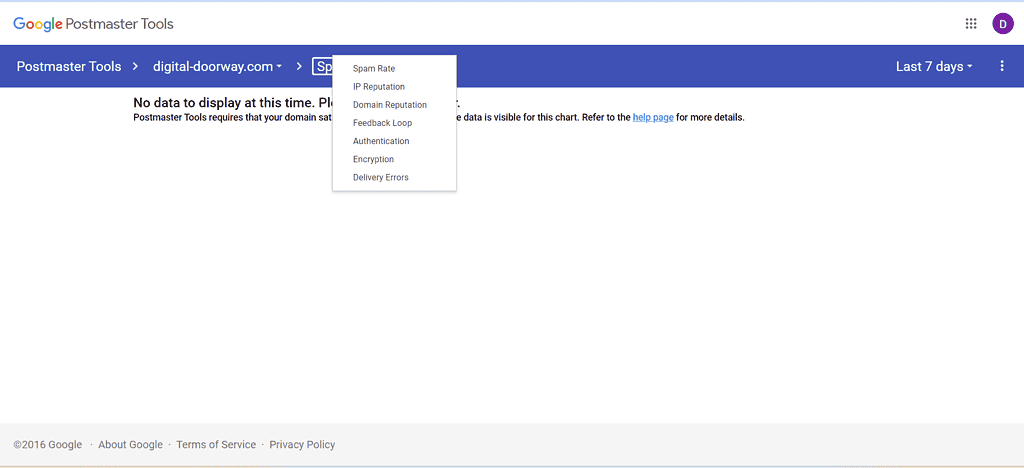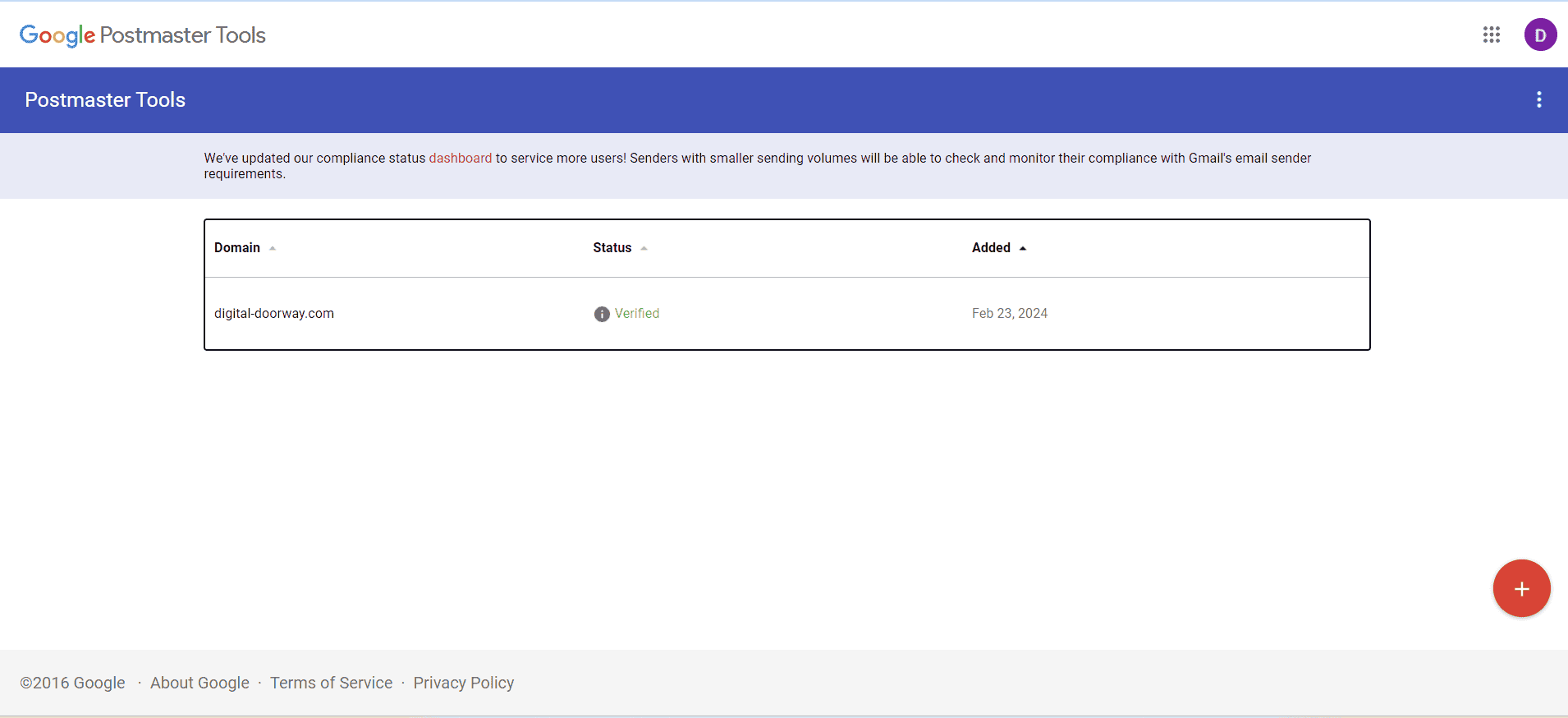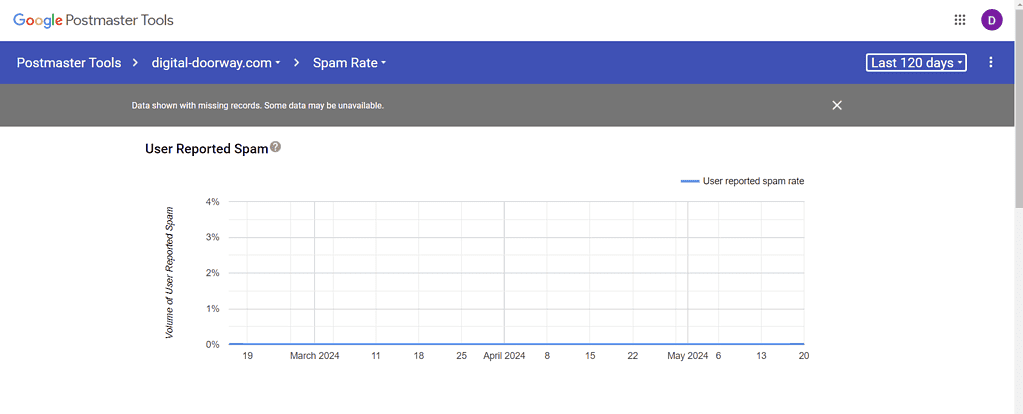Beginner’s Guide to Google Postmaster Tools
Do you want to understand more about how to use Google Postmaster Tools to monitor your email deliverability and identify issues with errors and spam reports?
Google Postmaster Tools is a free online tool from Google that gives you important information about the emails you send to Gmail users and the reputation of your sending domain.
With Google’s recent sender requirement updates, it’s even more important to keep an eye on your email metrics, as senders are expected to keep their spam rate below 0.1% and never above 0.3%.
Monitoring your email in Postmaster tools means you can be aware and take action as soon as you exceed these limits.
Email deliverability is a crucial aspect of any successful email marketing campaign. With the increasing number of Gmail users and the rising competition in the inbox, it’s essential to ensure your emails are reaching the intended recipients and not ending up in the spam folder. Google Postmaster Tools provides valuable insights into how your emails are being handled by Gmail, allowing you to identify and address any deliverability issues.
In this beginner’s guide, we will walk you through the key features and benefits of Google Postmaster Tools, how to set it up, and how to navigate the different dashboards to monitor and improve your email performance. Whether you are a marketer, system administrator, or an email sender of any kind, understanding and utilizing Google Postmaster Tools can help you optimize your email deliverability and achieve better results from your email campaigns.
Understanding Google PostMaster
Google Postmaster Tools is a website-based analytics tool that can give you valuable insights into how the emails you send are being handled by Gmail. It’s designed to help marketers, system administrators, and all types of email senders understand more about their email delivery.
By using the data provided by Postmaster Tools, you can tackle spam complaints promptly and troubleshoot email deliverability problems.
Postmaster Tools monitors various metrics that are critical to email deliverability, including
- spam rate
- IP reputation
- domain reputation, feedback loop (more detailed spam complaint reports)
- authentication (SPF, DKIM, DMARC)
- encryption, and
- delivery errors

What is Email Deliverability so important?
Email deliverability plays a crucial role in the success of your email marketing campaigns. It refers to the ability of your emails to reach the intended recipients’ inbox rather than being classified as spam or ending up in the recipient’s spam folder. With the majority of email users using Gmail as their email provider, ensuring your emails are delivered to their inbox is of utmost importance.
Gmail users are highly sensitive to email quality, and even a small increase in spam complaints or a decline in engagement can negatively impact your email deliverability. High spam rates can lead to your emails being blocked or filtered as spam, reducing the chances of your recipients seeing and engaging with your emails. By monitoring your email deliverability using
Google Postmaster Tools, you can identify any issues that may affect your email performance and take proactive measures to improve your deliverability rates.
Technical SEO
Read our blog on Technical SEO and find out why its so important
Overview of Google’s PostMaster Tools
Google Postmaster Tools provides several features and dashboards to help you monitor and analyze your email metrics. The main dashboard provides a high-level overview of your domain’s email performance, including the spam rate, IP reputation, domain reputation, and feedback loop data.
The spam rate dashboard displays the number of spam complaints received per day. It is essential to keep your spam rate below 0.1% to maintain a good sender reputation. The IP reputation dashboard shows how trustworthy Google believes the IP address you send your emails from is. The domain reputation dashboard shows how Google perceives the reputation of your email sending domain over time. A high domain reputation indicates a good sender reputation.
The feedback loop dashboard provides more detailed information about spam complaints, allowing you to address any issues promptly. The authentication dashboard monitors the success rates of SPF, DKIM, and DMARC authentication, ensuring your emails are properly authenticated. The encryption dashboard shows the percentage of your emails using TLS encryption, providing an added layer of security.
Lastly, the delivery errors dashboard helps you identify any issues with email delivery, such as rate limit exceeded, suspected spam, or bad or unsupported attachment.
Setting up PostMaster
To start using Google Postmaster Tools, you need a Google account. This can be your personal Google account or one associated with your organization.
You must also be able to prove ownership of the domain for which you want to monitor email traffic. Google uses this verification to ensure that only authorized users can access email performance data for a domain.
Adding and verifying your domain in Google Postmaster Tools is a straightforward process. Once you have a Google account, you can head over to Postmaster Tools and click the “Get Started” button.
From there, you can enter your domain and follow the instructions to add a TXT record to your DNS settings.
This TXT record serves as verification of domain ownership. Once the verification process is complete, your Postmaster Tools account will be set up and ready to use.
Here’s a step by step guide to adding your domain:
Adding and verifying your domain in Google Postmaster Tools is an important step to start monitoring your email performance. Here’s a step-by-step guide to help you through the process:
- Set up a Google account if you don’t already have one. This can be a personal account or one associated with your organization.
- Go to Google Postmaster Tools and click the “Get Started” button.
- Enter the domain you want to monitor email traffic for and click “Next.”
- Google will provide you with a TXT record that you need to add to your domain’s DNS settings.
- Access your domain’s DNS settings through your web host or domain name registrar’s control panel.
- Add a new TXT record and paste the string provided by Google as the value of the record.
- Save the record and wait for the changes to update.
- Return to Google Postmaster Tools and click “Verify” to complete the process.
- Once verified, you can start monitoring your email performance using Google Postmaster Tools.
Watch this video to learn how to set up
Verify Domain Ownership
Verifying domain ownership is an important step when setting up Google Postmaster Tools. It ensures that only authorized users can access email performance data for a domain. Google provides two methods for domain verification: CNAME record and TXT record. The TXT record method is the most common and straightforward method. Here’s how you can verify your domain ownership using the TXT record method:
- After adding the TXT record provided by Google to your domain’s DNS settings, return to Google Postmaster Tools.
- Click the “Verify” button.
- Google will check for the presence of the TXT record in your DNS settings to verify domain ownership.
- Once the verification process is complete, you will see a confirmation message in Google Postmaster Tools.
- Your domain is now verified, and you can start monitoring your email performance.

It’s important to note that the verification process may take some time for the changes to propagate in the DNS system. If you encounter any issues during the verification process, make sure to double-check the DNS settings and the TXT record.
Enhancing Email Performance
Google Postmaster Tools can help you enhance your email performance and improve your overall email deliverability. By utilizing the various features and metrics provided by Postmaster Tools, you can identify areas for improvement and take necessary actions to optimize your email campaigns. Here are a few ways you can enhance your email performance using Google Postmaster Tools:
- Analyze feedback loop data to address spam complaints promptly.
- Monitor and improve authentication practices, such as SPF, DKIM, and DMARC.
- Utilize feedback loops for better engagement, especially with mailing lists.
- Regularly monitor and troubleshoot delivery errors to ensure email delivery.
- By leveraging the data and insights provided by Google Postmaster Tools, you can enhance your email performance and achieve better results from your email campaigns.
Improving Email Authentication Practices
Email authentication is an essential aspect of ensuring your emails are properly authenticated and delivered successfully. Google Postmaster Tools provides valuable insights into your email authentication practices, including SPF, DKIM, and DMARC. Here’s how you can improve your email authentication practices using Google Postmaster Tools:
- Review the authentication dashboard in Google Postmaster Tools.
- Monitor the success rates of SPF, DKIM, and DMARC authentication.
- Aim to achieve a high success rate for all three authentication methods.
- Ensure that your SPF, DKIM, and DMARC records are properly configured and aligned with your sending domains.
- Regularly monitor and troubleshoot any authentication failures or issues.
- By improving your email authentication practices, you can enhance your email deliverability and ensure your emails reach the intended recipients’ inbox.
Advanced Techniques for Email Markerters
Leveraging Data for Strategic Decision
Keeping Your Sender Reputation Intact
Maintaining a good sender reputation is crucial for successful email marketing. Google Postmaster Tools provides insights into your sender reputation, including IP reputation and domain reputation. By monitoring these metrics and taking appropriate action, such as addressing delivery errors and resolving encryption problems, email marketers can ensure that their emails are not flagged as spam and are delivered to recipients’ inboxes. Implementing best practices, such as using double opt-in, providing valuable content, and honoring unsubscribe requests can also help maintain a good sender reputation. By prioritizing sender reputation, email marketers can improve email deliverability and engagement.

Conclusion
To sum it up, increasing your domain authority is crucial for improving your website’s credibility and search engine ranking. By understanding the importance of Domain Authority and how it is calculated, you can set realistic goals and take practical steps to boost it. Focus on creating high-quality content, improving your internal linking structure, and removing bad links while earning good ones.
Monitor your domain authority over time using tools and be aware of fluctuations. Remember that domain authority and page authority have key differences and similarities, so choose which one to prioritize based on your specific goals. Investing time and effort in boosting your domain authority is worth it for long-term SEO success.
Subscribe to our Newsletter to stay updated on all news related to this topic. If you have any questions, email us at mail@digital-doorway.com
Need Help?
Interested in scaling your business or get started in Digital Marketing?






